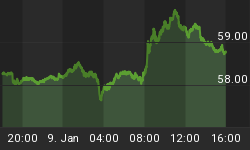From 'Road to Nowhere' by the Talking Heads:
We're on a road to nowhere come on inside. Takin' that ride to nowhere we'll take that ride. Maybe you wonder where you are I don't care. Here is where time is on our side take you there.
From the US Federal Reserve's website and the sub-section The Federal Reserve's Response to the Crisis:
"On September 21, 2011, the FOMC announced that it would extend the average maturity of its holdings of securities--by purchasing $400 billion par of Treasury securities with remaining maturities of 6 years to 30 years and selling an equal par amount of Treasury securities with remaining maturities of 3 years or less--by the end of June 2012. The FOMC also announced that it will reinvest principal payments from its holdings of agency debt and agency MBS in agency MBS. In addition, the FOMC will maintain its existing policy of rolling over maturing Treasury securities at auction."
"On June 20, 2012, the FOMC announced that it would extend the maturity extension program by purchasing over the second half of 2012 an additional $267 billion in longer-term Treasury securities, and selling an equal amount of shorter-term Treasury securities."
Gold blew out a year ago under the weight of its own momentum and suspect sponsorship as new buyers came into the monetary metal in a panicked, knee jerk fashion. Gold should be bought on the QT, on the sly, while it is being sold off or ignored. Rarely does panic buying work out well. Here is the current state of the gold correction as it ambles along on a road to nowhere.
The corrective consolidation drags on, with weekly MACD on an up-trigger and a slower TRIX still in non-confirmation mode. The chart above is kept simple so that it is self-evident. Gold is dealing with resistance in the low 1600's with the upper blue downtrend line a key level for serious discussion of the correction's end.
Gold was fated to correct due to the extreme momentum excess last year, but the two Fed entries quoted above are macro-fundamental road maps that allow gold market participants to a) have perspective on the seemingly endless correction and b) begin to strategize and prepare for its end.
The spread between "long-term Treasury securities" and "short-term Treasury securities" (30 year - 2 year shown above, with 30 - 3's looking similar) has not surprisingly been in consolidation since the euro crisis blowout. Gold has reliably followed this macro indicator in corrective consolidation; a consolidation that was created by the will of man, not natural market forces.
A rising yield curve signals stress within the financial system as investors come to favor short term Treasury bonds over long term bonds. Among the reasons for this is the fear of inflationary response to crisis by monetary authorities.
Obviously, the Fed's control of the yield curve has the benefit of creating a painting that if believed, tells a story of little financial stress. Hence, gold theoretically has no job to do in protecting people. So as long as the man-made painting is adhered to by the majority, gold will remain in corrective consolidation right along with the curve.
But using this perspective to advantage, one wonders about such things as the limited supply of short term Treasuries the Fed has to sell and one wonders about concepts like slingshots and pent up energy.
Will the entirety of Operation Twist one day be looked at as the pulling back on a sling shot, slowly and agonizingly approaching the point where it can be stretched no more? Will energy denied and finally released make the surge in summer of 2011 look mild?
These are questions for another time because as of now, players are looking in other directions. With all the notoriety the metal got in the kickoff to the euro crisis, the current correction had to be; first because the initial momentum thrust had to blow out and then because Operation Twist saw to it that an important macro indicator was put in place to keep the metal under control. Remember though that wise players get bullish on gold only when it is hated or at least well under control.
That control may last only as long as the Fed's supply of short term Treasury securities.
This is just a reminder about patience and perspective. Do sign up for the free (and spam free) eLetter for ongoing perspectives on financial matters large and small.

















